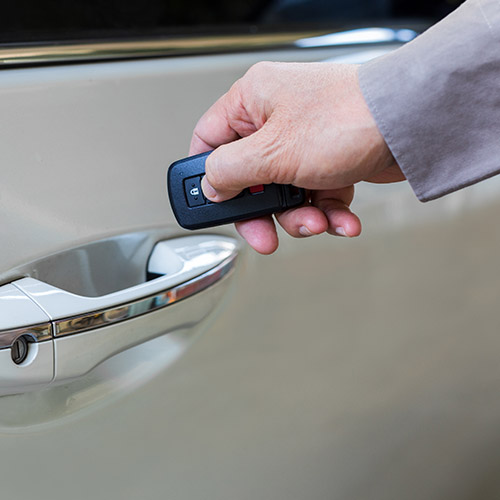
Keyless Vehicle Entry Systems - Relay Theft
Introduction
Throughout history, the automotive industry has always been one of the most receptive industries to emerging technologies. Technology has defined the way cars are manufactured, operated and maintained. More recently, technology has redefined the way cars use fuel, with electric, hybrid and hydrogen systems displacing the internal combustion engine and gas-fed engines as the driving force of the future.
With new technologies comes the expectation of enhanced luxury, safety and efficiency. One notable advancement of recent decades is introduction of keyless vehicle entry systems.
The first keyless vehicles appeared on the garage forecourts in the mid 1990’s. Since that time their popularity has increased and can now be found as standard across vehicle ranges, including commercial and industrial fleets.
The use of keyless vehicle entry systems has provided new opportunity to thieves. Home Office data shows that 129,159 vehicles were stolen in England and Wales for 2023/2024. This compares to 130,119 for the previous year. These figures combine thefts both from, and of, vehicles so owners and operators cannot afford to be complacent. The most vulnerable cars were Land Rover, Ford and Lexus.
Vehicle thefts are not the exclusive domain of the luxury car market. Light Commercial Vehicles (LCV) are a prime target for criminals. ‘Tracker’ research has indicated that bypassing keyless vehicle entry systems accounted for up to 82% of the total number of LCV thefts.
With both the Government and law enforcement agencies asking manufacturers to improve vehicle security it is essential that owners of fleets who maintain vehicles with such entry systems take action to protect them.
When looking to procure fleet vehicles, the security of the vehicles must be one of several key considerations. In addition, we need to ensure that security of vehicles is properly maintained by the operators of those vehicles through the provision of effective information, instruction and guidance.
Please download to read the full resource.
How can we help you?
For more advice on how we can help lower the cost of your risk, please email contact@rmpartners.co.uk
Unsubscribe
You can opt out of marketing communications at any time by contacting us.
Related Resources
Sign up to receive the latest from rmp
Sign up to receive the latest from RMP
For information on how we use your personal data please refer to our UK Privacy Notice | EEA Privacy Notice.
